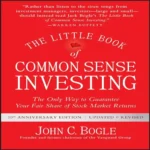Investing Guide for Beginners PDF Free Download
157 KB
Description
Welcome to the ultimate investing guide for beginners! If you’re new to the world of investing, you’ve come to the right place. This comprehensive PDF resource will provide you with all the information you need to start building wealth through investing.
Investing can seem daunting at first, but with the right knowledge and guidance, you can navigate the world of investments with confidence. Whether you’re looking to save for retirement, buy a house, or simply grow your wealth, investing is a powerful tool that can help you achieve your financial goals.
Why Investing is Important for Building Wealth
Investing is a crucial component of building wealth for several reasons. First and foremost, investing allows your money to work for you. Instead of simply depositing your savings into a bank account, investing allows you to put your money into assets that have the potential to grow in value over time. This means that your investments can generate passive income and increase your net worth.
Another reason why investing is important for building wealth is the power of compounding. Compounding refers to the ability of an investment to generate earnings, and then those earnings generate their own earnings. Over time, this can lead to exponential growth. By starting to invest early, you give your investments more time to compound, which can significantly increase your wealth over the long term.
Furthermore, investing can act as a hedge against inflation. Inflation refers to the increase in prices over time, which erodes the purchasing power of your money. By investing in assets that have the potential to outpace inflation, you can protect your wealth and ensure that your money maintains its value.
Types of Investments for Beginners
When it comes to investing, there are several options available to beginners. Here are some of the most common types of investments you can consider:
- Stocks: Stocks represent ownership in a company. When you buy stocks, you become a shareholder and have the potential to earn returns through dividends and capital appreciation.
- Bonds: Bonds are debt securities issued by governments, municipalities, and corporations. When you invest in bonds, you essentially lend money to the issuer in exchange for regular interest payments and the return of the principal amount at maturity.
- Mutual Funds: Mutual funds pool money from multiple investors to invest in a diversified portfolio of stocks, bonds, and other assets. By investing in mutual funds, you can gain exposure to a wide range of investments with a relatively small amount of money.
- Exchange-Traded Funds (ETFs): ETFs are similar to mutual funds but trade on stock exchanges like individual stocks. ETFs can provide diversification and flexibility, making them a popular choice for beginner investors.
- Real Estate: Investing in real estate can involve buying properties for rental income or capital appreciation. Real estate can provide steady cash flow and potential tax benefits.
Remember, each investment option comes with its own set of risks and potential rewards. It’s important to do your research and understand the characteristics of each investment before making a decision.
Understanding Risk and Return
When investing, it’s crucial to understand the relationship between risk and return. Generally, higher-risk investments have the potential for higher returns, but they also come with a greater chance of loss. On the other hand, lower-risk investments tend to have lower returns but are more stable.
One way to assess risk is by looking at the historical performance of an investment. Historical data can provide insights into how an investment has performed in different market conditions. However, past performance is not always indicative of future results, so it’s important to consider other factors as well.
Diversification is another key concept in managing risk. By diversifying your investments across different asset classes and sectors, you can reduce the impact of any single investment on your overall portfolio. This can help protect your investments from significant losses and increase the likelihood of positive returns.
Lastly, it’s important to have a long-term perspective when investing. The value of investments can fluctuate in the short term, but historically, the stock market has shown positive returns over the long term. By staying invested and avoiding emotional reactions to market volatility, you can increase your chances of achieving your investment goals.
Tips for Managing Your Investments
Managing your investments effectively is crucial for long-term success. Here are some tips to help you make the most of your investment journey:
- Set Clear Goals: Before you start investing, define your financial goals. Whether it’s saving for retirement, buying a house, or funding your child’s education, having clear goals will guide your investment decisions.
- Create a Diversified Portfolio: Diversification is key to managing risk. Allocate your investments across different asset classes, industries, and geographical regions to spread your risk and increase the potential for returns.
- Regularly Monitor and Rebalance: Keep track of your investments and review their performance regularly. If your portfolio becomes unbalanced due to market fluctuations, consider rebalancing by adjusting your allocations to maintain your desired asset mix.
- Stay Informed: Stay up to date with market trends, economic news, and changes in investment regulations. This will help you make informed decisions and adjust your investment strategy accordingly.
- Seek Professional Advice: If you’re unsure about investing or need help managing your investments, consider seeking advice from a qualified financial advisor. They can provide personalized guidance based on your financial situation and goals.
PDF Name: Investing Guide for Beginners PDF
PDF Size: 157 KB
Category: Stock Market
Quality: Readable
Language: English





